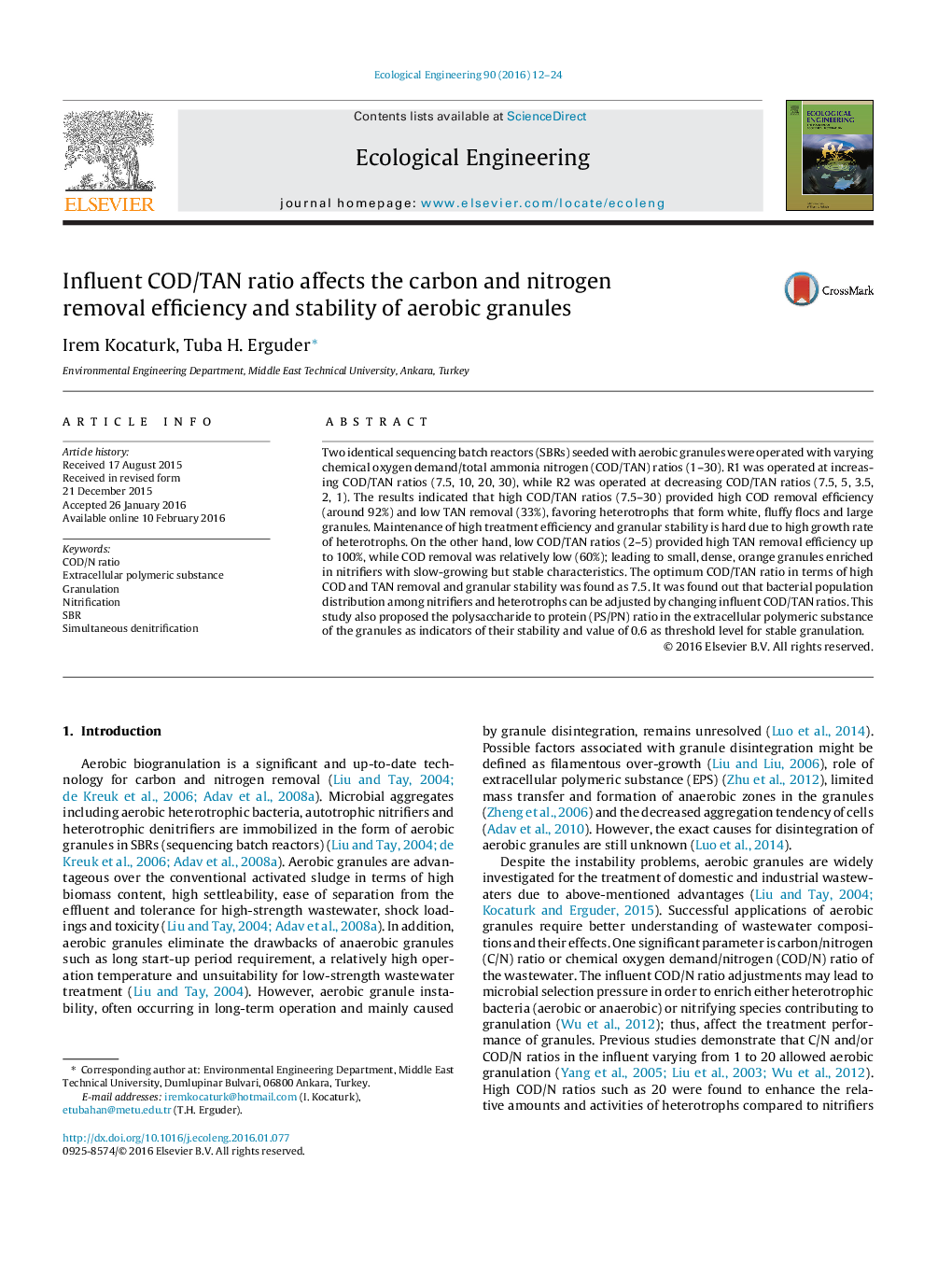| Article ID | Journal | Published Year | Pages | File Type |
|---|---|---|---|---|
| 4388640 | Ecological Engineering | 2016 | 13 Pages |
Abstract
Two identical sequencing batch reactors (SBRs) seeded with aerobic granules were operated with varying chemical oxygen demand/total ammonia nitrogen (COD/TAN) ratios (1-30). R1 was operated at increasing COD/TAN ratios (7.5, 10, 20, 30), while R2 was operated at decreasing COD/TAN ratios (7.5, 5, 3.5, 2, 1). The results indicated that high COD/TAN ratios (7.5-30) provided high COD removal efficiency (around 92%) and low TAN removal (33%), favoring heterotrophs that form white, fluffy flocs and large granules. Maintenance of high treatment efficiency and granular stability is hard due to high growth rate of heterotrophs. On the other hand, low COD/TAN ratios (2-5) provided high TAN removal efficiency up to 100%, while COD removal was relatively low (60%); leading to small, dense, orange granules enriched in nitrifiers with slow-growing but stable characteristics. The optimum COD/TAN ratio in terms of high COD and TAN removal and granular stability was found as 7.5. It was found out that bacterial population distribution among nitrifiers and heterotrophs can be adjusted by changing influent COD/TAN ratios. This study also proposed the polysaccharide to protein (PS/PN) ratio in the extracellular polymeric substance of the granules as indicators of their stability and value of 0.6 as threshold level for stable granulation.
Related Topics
Life Sciences
Agricultural and Biological Sciences
Ecology, Evolution, Behavior and Systematics
Authors
Irem Kocaturk, Tuba H. Erguder,
